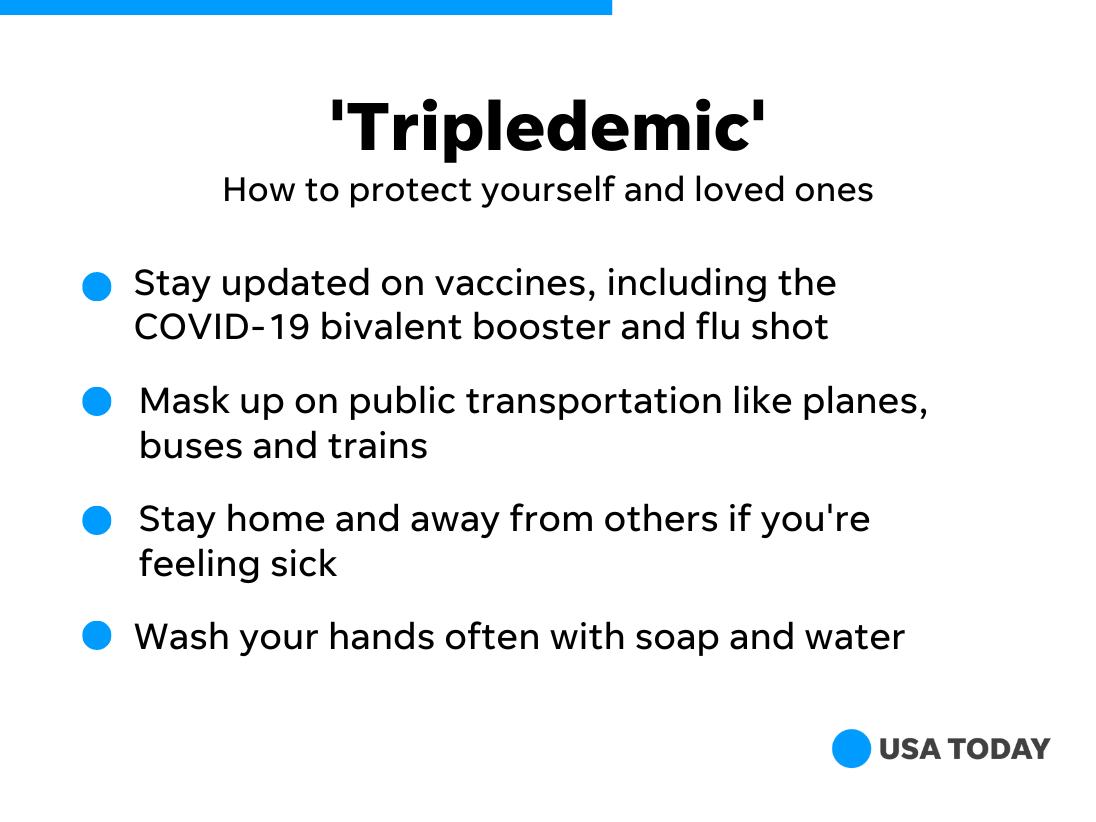If you didn’t know by the cacophony of sniffles and coughs in public settings – cold season is in full swing.
As mitigation measures from the COVID-19 pandemic stifled transmission of other respiratory viruses, we’re seeing an influx of cases of RSV, flu and COVID, plus a shortage of over-the-counter pain medication for children.
If you’re sick, health experts say it’s important to stay home and rest to allow the body to recovery and prevent transmitting the virus to others.
But some cold symptoms can last for weeks. So how can do you know when it’s the right time to return to daily activities? Here’s what experts said.
READ THIS: Explaining winter’s early rush of illness – and if it will continue
Common cold symptoms: Can you get a fever with a cold?
Fevers aren’t common with colds but it can happen, said Dr. Joseph Khabbaza, pulmonary and critical care physician at the Cleveland Clinic.
Typical cold symptoms include:
Runny or congested nose
Cough
Sore throat
Mild headache
Sneezing
How long does a cold last? How long is it contagious?
Cold symptoms may last seven to 10 days and may be most contagious in the first four to five days, said Dr. Maria Eugenia Petrini, medical director of clinically integrated network at Nemours Children’s Health.
Can you catch a cold from cold weather?
“Bundle up or you’ll catch a cold!” It’s the age-old expression parents say to their children refusing to wear their winter jackets. But a recent study found out they may be right.
Researchers from Northeastern University studied nasal samples and found immune mechanisms in the nose worked differently at different temperatures:
In normal body-heat conditions, the nose successfully deployed extracellular vesicles that bond and block viruses from entering the body.
Researchers found that just a 5-degree drop in temperature led to a 50% decrease in immune activity.
“Our study is really focused on prevention, that initial exposure and how to enhance your defenses,” said lead author Mansoor Amiji, professor of pharmaceutical sciences at Northeastern University.
How to treat a common cold
Unlike bacterial infections, antibiotics don’t have any impact on respiratory viruses. This means the best thing to do is drink lots of fluids and rest as the virus takes its course, Petrini said.
While many Americans rely on pain relievers to alleviate cold symptoms, a shortage of over-the-counter medication for kids has put some parents in a panic. But health experts say there are ways to treat a cold at home without medications:
Drink lots of fluids: Yes, that includes chicken noodle soup. Clear liquids – like water – are best but experts also recommend warm apple juice or lemonade for small children.
Stay comfortable: Wear loose-fitting clothing or take lukewarm showers/baths if you have a fever. Avoid cold baths as that could make you shiver and raise your body temperature.
Congested? Turn on a humidifier
Get plenty of rest.
What can make a cold worse?
Anything that weakens the body’s immune system could prevent you from getting better, faster, health experts say. This includes physical exertion, intense stress, and smoke and alcohol.
“You can prolong recovery if you don’t give yourself the extra time to recover,” Petrini said.
When can you return to daily activities after a cold?
Health experts urge people to stay at home while sick to prevent transmitting the virus in public spaces.
“People think they can continue their routine life. But if you have a cold, you’re going through a viral process that’s contagious,” Petrini said. “Staying at home when you feel sick is the right thing to do for yourself and for others, too.”
But after a week or two, it’s OK to start returning to daily activities even if there’s still some lingering cold symptoms. But it’s important to listen to your body’s limitations.
Gym: “Go back gradually rather than going into a full swing,” Petrini said. “Instead of taking a full class, take a half class, test the waters, see how the body reacts to that the exercise and the demand.”
Office: “We always say to kids to be able to go back to school … they need to be fever-free for 24 hours and symptoms need to be getting better,” Petrini said. The same goes for adults, if they’re not feeling too fatigued.
Dig Deeper
Feeling sick? Make sure to have these essentials at home
Doctors warn flu is ‘fierce’ this year: Here’s what to know
Kids drug shortage: Why ibuprofen and acetaminophen are in short supply
Follow Adrianna Rodriguez on Twitter: @AdriannaUSAT.
Health and patient safety coverage at USA TODAY is made possible in part by a grant from the Masimo Foundation for Ethics, Innovation and Competition in Healthcare. The Masimo Foundation does not provide editorial input.
This article originally appeared on USA TODAY: Common cold symptoms, treatment and how long you’re contagious
Source: Read Full Article
